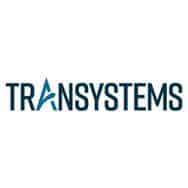This post is an overview of Chade-Meng Tan’s book, Search Inside Yourself: The Unexpected Path to Achieving Success, Happiness (and World Peace) If you enjoyed reading this review and think I need to provide others (I consume, on average, a book a week); let me know through the comments below.
My journey in developing a mindfulness practice started in 2005. After nearly a decade of starting, stopping, learning, and then starting over again my practice has become an indispensible part of my day and my life. When I learned that an engineer at Google, known as the “Jolly Good Fellow”, created a course on mindfulness I was ecstatic! Finally, an engineer who gets it and does so in such an easy to understand way that anyone can tap into the power of a mindfulness practice to bring success and happiness.
Why Be Mindful? Meng is an engineer, steeped in science and the scientific method. It’s with this background that he under-took the task to create a course that taught people the mindful-ness practice in a way in which it can be applied to everyday life. It’s not “navel gazing”; it’s bringing focus and clarity to your mind, observation of your thoughts, and installing a gap between a stimulus and your response. It’s about being attuned to other people. And by being observant, more present, and more in tune with others you end up contributing more to the bottomline because you’re clear about what you’re doing and why.
Emotionally Smart. Emotional intelligence (EI) is a key part of mindfulness. It’s importance to business is just as strong:
- Contributes to stellar work performance. In fact, EI is 2x as important as pure intellect and expertise.
- Outstanding Leadership. Over 80% of the qualities of effective leaders are linked to EI.
- Ability to create the conditions for happiness. EI gives you the tools to apply a mindfulness practice of observation of ones thoughts.
EI and mindfulness are interlinked and combined; they allow one to be über-effective in everything they undertake.
Bottom Line: Mindfulness extends beyond just sitting on a cushion and observing thoughts and breath. It has to in order to be of any use in our daily lives! One area where it will boost your success immediately is in communications. The act of mindfully listening to another is one action that you can apply today; in your client meeting, the field visit to a job site, at home with your spouse and children, or out with friends. Success and happiness can, and must, be developed from inside. Otherwise, what you have on the outside still might not be adequate.
Key Take-Aways:
#1 – Mindfulness is the best mental app for developing EI.
#2 – Every emotion has a correlation in the body.
#3 – Self-confidence comes from emotional awareness and an accurate self-assessment.
#4 – Begin your meditation practice with 2 minutes.
#6 – Don’t try to avoid emotions, they’re what make us human.
#7 – Motivation grows from alignment, envisioning, and resilience.
[widgets_on_pages id=”AdSense Posts”]
Mindfulness In Six Easy Steps.
What is mindfulness? There’s no one better qualified to answer this than Jon Kabat-Zinn, professor of medicine and the one credited with brining mindfulness practice to mainstream America. According to Kabat-Zinn, “mindfulness is the gentle effort to be continuously present with experience.” Note the words “gentle effort”, because you will find immediately upon beginning your mindfulness meditation that your attention will wander away from your breath. It’s natural for this to occur, but easily frustrating! Hence the need for your gentle effort to bring your attention back to your breath. Then repeat!
The Mindfulness Meditation Process for Engineers.
- Intention. Create an intention, a reason for wanting to abide in mindfulness.
- Follow your breath. Just bring gentle attention to it.
- Attention. This may be a state of where your mind is calm/concentrated…perhaps even flow with your breath. This is fleeting as it will dissolve to…
- Distraction. May ruminate, may worry or fantasize.
- Regain attentional focus.
- Attitude.
[widgets_on_pages id=”AdSense Posts”]
Posture for Mindfulness Meditation.
In general, you don’t want to slouch. Meng says he thinks of himself as being Mt. Fuji, strong a majestic. Whether that works for you or not, sit with dignity. That’s’ the best way I’ve learned to think of my posture.
- Take your SEAT. Whatever you’re sitting on – a chair, a meditation cushion, etcetera – find a spot that
gives you a stable, solid seat. Don’t slouch or lean back…sit with dignity! - If on a cushion on the floor, cross your LEGS comfortably in front of you. If on a chair, then make certain the bottom of your feet are touching the floor.
- Straighten – not stiffen – your UPPER BODY. The spine has a natural curvature, so let it be. Your head and shoulders can comfortably rest on top of your vertebrae.
- Place your upper arms parallel to your upper body. Then let your HANDS drop onto the top of your legs. With your upper arms at your sides, your hands will land in the right spot. Too far forward will make you hunch over – bad! Too far back will make you stiff – also bad!
- Drop your chin a little and let your GAZE fall gently downward. You may let your eyelids lower. If you feel the need, you may lower them completely, but it isn’t necessary to close your eyes while meditating. You can simply let what appears before your eyes be there without focusing on it.
- Be there for a few moments. SETTLE. Now you can follow the next breath that comes out. You’ve started on the right foundation – and hands, and arms, and everything else.
[widgets_on_pages id=”TECC Free Resources”]
Onward,
Christian J. Knutson, P.E., PMP
Engineering Management Institute
[widgets_on_pages id=”AdSense Posts”]






